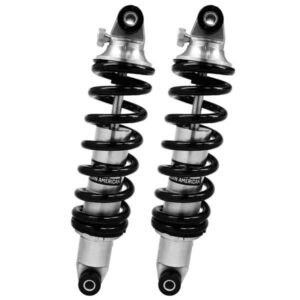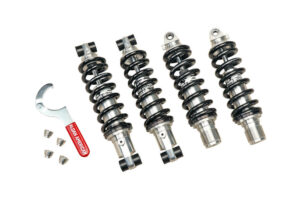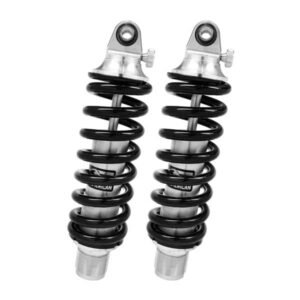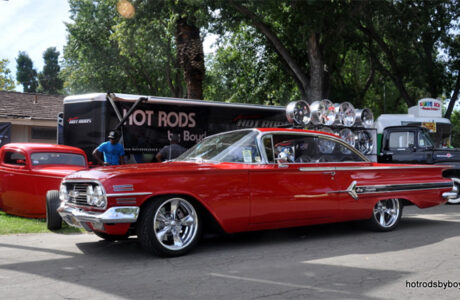Upgrading the 1993-2002 Chevy Camaro and Pontiac Firebird F-Body cars for Optimal Handling
Since Chevrolet introduced the new Camaro and Pontiac introduced the new Firebird in 1993, these fourth-generation models have stood as icons of American muscle, embodying power, design, and the essence of freedom, much like their predecessors.
However, despite their impressive horsepower and design appeal, the fourth-generation Camaro and Firebird models often fall short in modern handling capabilities. Fortunately, with a series of straightforward upgrades, owners can significantly enhance these classic muscle cars, allowing them to handle the agility and finesse expected on today’s roads and racetracks.
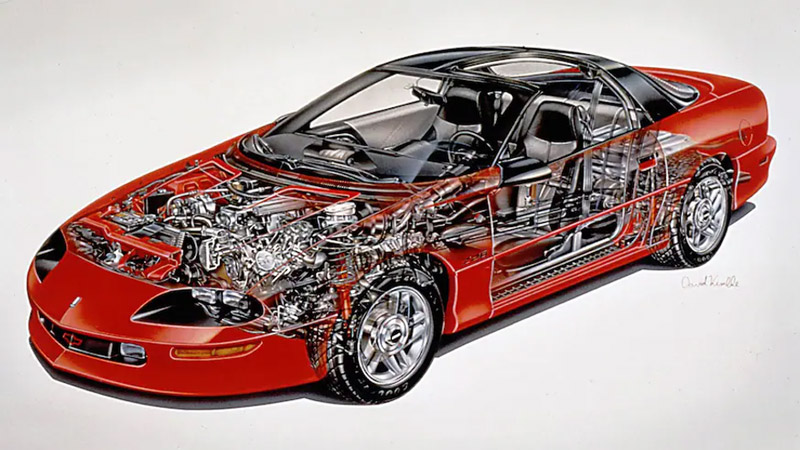
1993 Camaro Cutaway | Courtesy Motor Trend
Drawing on the knowledge of the suspension specialists at Aldan American, this guide explores how to upgrade the handling of the 1993-2002 Chevrolet Camaro and Pontiac Firebird.
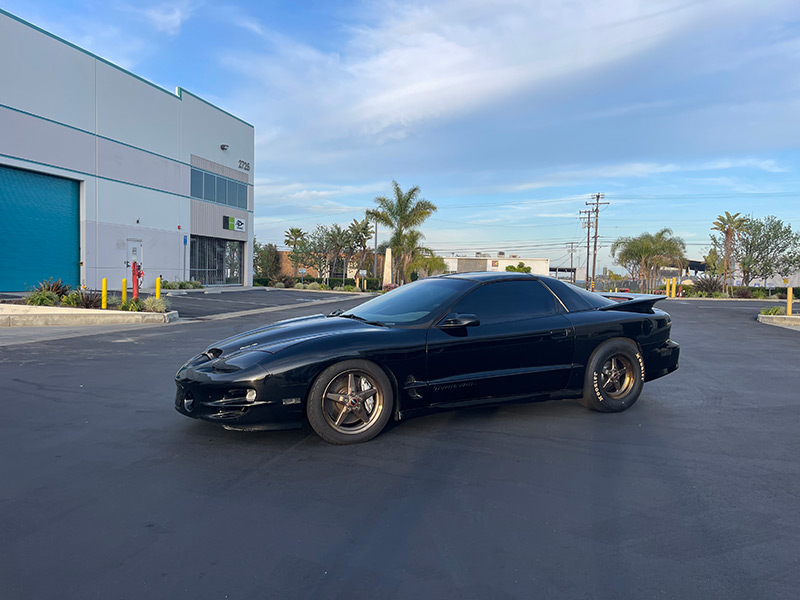
Upgrades over Third-Generation F-bodies
The fourth-generation F-body cars featured significant steering and suspension advancements over the third-gen. Key developments included adopting a Short/Long Arm (SLA) front suspension with a revised torque arm rear suspension for improved handling and stability, along with rack and pinion steering for more precise control.
Renew Rubber Bushings
Replacing rubber bushings in the suspension system of a fourth-generation F-body is a critical first step, especially considering these vehicles are now between 20 and 30 years old. Over time, the original rubber bushings degrade due to exposure to elements, wear from usage, and age-related deterioration.
Rubber bushings can become dry, cracked, and brittle as they age, leading to increased road noise, harsher ride quality, diminished handling precision, and accelerated wear on other suspension parts due to increased vibrations and movement.
With advancements in materials technology, many fourth-gen F-body owners opt to replace old rubber bushings with polyurethane alternatives like those from Energy Suspension. These offer increased durability and resistance to chemicals and weather and provide a more responsive driving feel.
Chassis and Frame: Strengthening the Core
The structural backbone of the fourth-gen F-bodies is the unibody chassis and front frame clip. Inspecting the underbody is crucial, given the potential wear and tear over decades. Rust or structural damage can indicate more profound issues, and performance handling modifications will only exacerbate the problem. Inspect carefully before purchasing a fourth-gen F-body: Here’s how. Before you begin modifications, corrosion must be eliminated, necessitating repairs or consultations with an automotive restoration expert for complex challenges.
Chassis Rigidity: Enhancing with Subframe Connectors
For those aiming to improve their Camaro or Firebird’s handling to meet contemporary standards, reinforcing the chassis structure is essential. Summit Racing offers 42 different subframe connectors that link the front subframe and unibody to minimize chassis flex. Call Summit to determine what is right for you and your application.
Suspension Overhaul: Upgrading for Performance
The suspension system is crucial to a vehicle’s handling, ride comfort, and overall driving dynamics. Fourth-gen Camaro and Firebird models, with their 1980s engineering, stand to gain significantly from modern suspension improvements.

Fourth-generation F-body Front Suspension | Courtesy Motor Trend
Aftermarket suspension specialists Aldan American have taken the guesswork out of selecting coilover shocks and springs. The company offers a complete, bolt-on coil-over conversion kit tailored specifically to the fourth-gen F-bodies, enhancing front suspension functionality.
The Aldan kit includes U.S.-made double-adjustable TrackLine Series shocks, significantly improving handling and ride quality. TrackLine Series shocks offer 66 adjustment combinations with 11 rebound settings and six compression settings for superior handling, traction and control.

Fourth-generation F-body Rear Suspension | Courtesy Motor Trend
Aldan coilover kits are easy to install, require no cutting or welding and include everything you need to bolt on to your factory or aftermarket control arms. When installed, the coilovers are adjustable to lhttps://www.spohn.net/shop/1993-1997-GM-F-Body/Suspension/Tubular-Front-A-Arms/Tubular-Front-Lower-A-Arms.html?gad_source=1&gclid=EAIaIQobChMIyqyTwNPMhAMVLAatBh2b5AAqEAQYASABEgJsA_D_BwEower ride height from 0.0-2.0″ front and rear.
The Aldan kit includes U.S.-made double-adjustable TrackLine Series shocks, significantly improving handling and ride quality. TrackLine Series shocks offer 66 adjustment combinations with 11 rebound settings and six compression settings for superior handling, traction and control.

Cornering Mastery with Sway Bars
Sway or anti-roll bars are critical to a car’s suspension system as they reduce body roll during cornering. Connecting the left and right wheels through a torsional spring counteracts the tilting force on the car’s body, improving handling stability and reducing lean in turns, spreading the F-bodies’ weight more evenly across all four tires.
Aftermarket options, such as those from Hellwig Suspension Components, provide performance-oriented sway bars for the Camaro and Firebird.
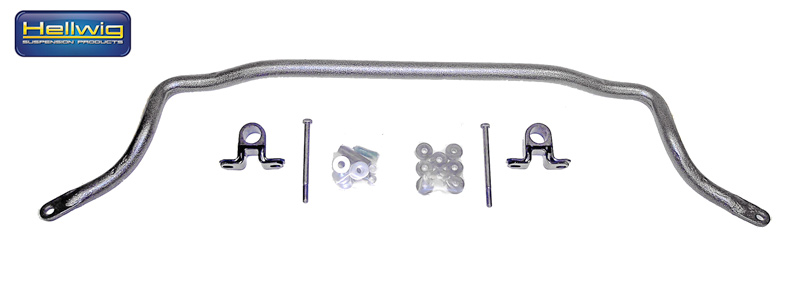
If you plan to drive your F-body on the track or to an autocross, consider an adjustable rear bar to fine-tune handling dynamics and adjust the vehicle’s balance during aggressive cornering maneuvers.
Steering Dynamics: Achieving Precision Control
As the engineers behind the fourth-gen F-body elected to replace the traditional steering box, pitman arm, and idler arm setup used on all previous generation models with a modern rack and pinion system, an upgrade here can be limited to a Proforged Performance Steering Rebuild Kit that replaces worn out tie rod ends with upgraded examples.
If you’re planning on taking your Camaro or Firebird to the track or autocross, Detroit Speed recently announced a bolt-in quicker ratio steering rack for those who require a more rapid steering response.
Brakes: Ensuring Robust Stopping Power
In performance driving, reliable and effective braking is as crucial as acceleration and handling. Upgrading the braking system with comprehensive kits from Wilwood Engineering, Inc. can significantly enhance stopping power and safety.
Wildwood offers four front brake kits for the fourth-gen F-body, ranging from six-piston calipers clamping 14″ rotors to a four-piston kit with 12.19″ rotors that accommodate wheels as small as 15″ in diameter. At the rear, Wilwood offers a kit with a four-piston caliper on 12.86″ rotors. The kit allows for the connection to the OEM parking brake.

Big brakes may require higher and more consistent line pressures than what your OEM master cylinder can provide. Consider a conversion to a Hydro-Boost system that increases brake pressure by tapping into the force generated by your power steering system (instead of engine vacuum). Sweeting Performance offers a Hydo-Boost kit with high-quality Wilwood components.
An often overlooked aspect of the braking system is the brake fluid. Over time, brake fluid can absorb moisture, leading to decreased pedal feel and stopping power. We recommend using a high-quality brake fluid like Wilwood Hi-Temp 570, renowned for its high boiling point and increased resistance to aeration and foaming, which improves pedal feel and consistency in severe use.
Tires and Wheels: The Connection to the Road
Choosing the right tires and wheels is fundamental for translating the Camaro or Firebird’s power into effective road performance. Modern performance tires paired with quality alloy wheels can dramatically improve grip, handling, and the overall driving experience.
The sweet spot for performance tires is the 200 treadwear category. Treadwear rating is part of the UTQG markings on the side of a tire. Several sanctioning bodies have set the treadwear limit for specific categories with a minimum treadwear rating of 200. Of course, tire companies rushed to develop dual-use street/track tires, meeting that criteria.
Tire companies offering 200 treadwear rating tires include well-known brands like Bridgestone, Goodyear and Michelin but also obscure manufacturers like Nanking, Nexen and Vitour.
The choice of 200 treadwear performance tires is staggering. A great introduction to the category is the Track Tire Buyers Guide published in Grassroots Motorsports magazine, where pro driver Andy Hollis tested over 20 tires in seven different categories plus price.
We prefer custom billet units from Hot Rods by Boyd (the Coddington family-owned business) for wheels. HRBB, as it’s commonly known, builds its wheels to order, so you don’t have to compromise with off-the-shelf wheels.
We suggest staggered HRBB HR-01 wheels for the fourth-generation Camaro and Firebird. It’s a modern update of the classic mesh design that compliments the F-body’s styling.
Alignment: Bringing It All Together
A professional wheel alignment ensures the car’s tires wear evenly and track correctly. However, alignment significantly impacts handling, depending on where you drive. A street alignment will differ from a drag race, track day or autocross alignment. It’s advisable to seek expert alignment advice, and it’s critical to communicate all modifications made so that the car is aligned appropriately.
Summary
Enhancing the 1993-2002 Chevrolet Camaro and Pontiac Firebird with advanced handling, braking, and steering modifications revitalizes these iconic muscle cars and seamlessly merges their classic charm with modern vehicles’ superior performance and safety features.
This approach ensures these timeless models continue to deliver exhilarating driving experiences while meeting contemporary expectations for vehicle dynamics and safety, preserving their legacy and appeal for future enthusiasts.
-
Coilover Kit – Plymouth Prowler 1997-2002 Front and Rear
$1,559.99 – $1,669.99 This product has multiple variants. The options may be chosen on the product page

